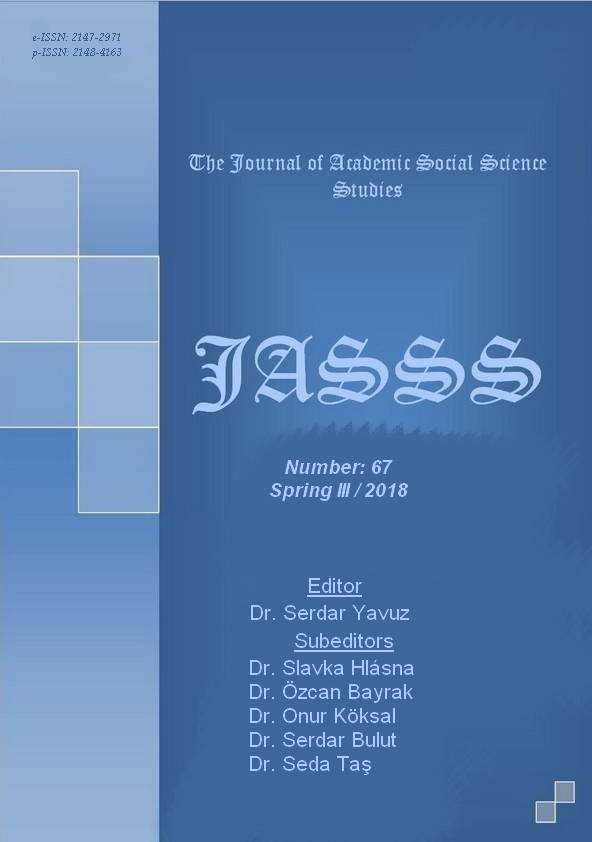Author :
Abstract
Oldukça eski tarihlere kadar uzanan bir geçmişe sahip olan otoportre bireyi en iyi anlatan, anlamsal ve biçimsel olarak ele alan bir plastik sanat alanı olarak karşımıza çıkmaktadır. Konu olarak insanı temel alan otoportre sanatı onu toplum içinde diğerlerinden ayıran özellikleri vurgulayan, kimliğini ön plana çıkaran belge niteliğindedir. Bu tanım doğrultusunda araştırmanın amacı, otoportre konusunun sanat tarihsel süreç içerisinde modernizmden günümüze kadar olan süreçteki toplumsal ve bireysel değişimlere paralel gerçekleşen evrimleşme sürecini irdelemektir. Tarihsel olarak çok eskilere gitmesine rağmen özellikle modernizmden günümüze kadar olan süreç içerisinde otoportre ana başlığı altında bireyin kimliksel oluşumunu yansıtan, onun toplumsal dayatmaların ötesine geçerek özgürleşmesine yönelik eleştirel içerikli eserler çalışan sanatçılara odaklanmaktadır. Bunu gerçekleştirirken otoportrenin sanat tarihsel açıdan kronolojik geçmişine de değinilmiş, Çağdaş Sanatta otoportrenin kimliğin temsili bağlamında üstlendiği rollerde dönemin sanatçı ve eserleri üzerinden sorgulanıp bir senteze ulaşılmaya çalışılmıştır. Otoportre sanatçının kendi varoluşsal sorgulamalarına yönelik aradığı cevapların bir ürünüdür diyebiliriz. Konunun sanatçının kendisi olduğu otoportre ben olgusu üzerine yoğunlaşan Varoluşçu felsefenin de çıkış noktalarından biridir. Günümüzde toplumsal, ekonomik, kültürel, siyasi alanlarda meydana gelen hızlı değişim bireylerin benlik bilinci oluşturma süreçlerini olumsuz etkilemektedir. Bu durum otoportre üzerine çalışmalar yapan sanatçıları da etkileyerek, toplumsal sorunları kendi bedenlerinin görüntüleri üzerinden sorgulamalarına neden olmuştur. Dolayısıyla otoportre üzerine plastik çözümlemelerin ele alınacağı sorun, özellikle 19. ve 20. yüzyıllarda ortaya çıkan ve günümüzde artarak devam eden “çağdaş insanın varoluş sorunu”dur.
Keywords
Abstract
The history of portraiture dates to very old times in history. It is the branch of the plastic arts that represents individuals the best and approaches them considering meaning and form. The theme of portraits is humans. They act as the documents that emphasize their distinguishing qualities and highlight their identities. Based on this description, the objective of this study is to analyze the evolution of the self-portrait within the history of art that has always been in consistency with the social and individual changes from modernism until today. Even though self-portraits have a very long past, the study particularly focused on the artists whose works reflect the formation of individual identity, and have a critical attitude towards the liberation of the individual going beyond social enforcement from modernism until today, with self-portrait as the main heading. The study also described the chronological history of the self-portrait within art history and attempted to make a synthesis by questioning the role of the self-portrait as representative of identity in modern art based on the artists and works of that period. The self-portrait may be accepted as a product of the answers that are sought by artists regarding their own existentialist questioning. The self-portrait, which studies the very artist as the subject, is one of the starting points of existentialism since it focuses on the fact of ego. Today, the rapid changes in social, economic, cultural, and political environments are having a negative impact on individuals’ identity formation process. This situation also affected the artists who worked on self-portraits, and made them question social problems based on their own body images. For this reason, the problem for which the study will do plastic analyses on self-portraits is modern individual’s existence problem that originated in the nineteenth and twentieth centuries and has grown stronger until the present day.





